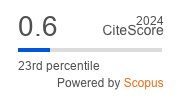Aortic remodeling in patients with aortic dissection after Frozen Elephant Trunk procedure
https://doi.org/10.29001/2073-8552-2025-2765
Abstract
Background. Aortic dissection remains one of the most challenging cardiovascular pathologies for radical surgical treatment. The frozen elephant trunk (FET) procedure allows simultaneous reconstruction of the aortic arch and descending thoracic aorta. However, long-term outcomes are largely determined by postoperative aortic remodeling.
Aim: To compare aortic remodeling after implantation of dissection-specific versus conventional hybrid prostheses using a standardized protocol and to assess the incidence of specific complications – distal stent graft-induced new entry (dSINE) and endoleaks.
Material and Methods. This prospective single-center study included 106 patients with aortic dissection who underwent FET between 2014 and 2025. Patients were divided into two groups: Group 1 (n = 56) – “Soft Elephant Trunk” hybrid prosthesis (MedInzh, Russia); Group 2 (n = 50) – conventional hybrid prostheses (E-Vita Open Plus, Thoraflex Hybrid, Medtronic Valiant). Remodeling was assessed according to a patented protocol (RU 2841599 C1), including planimetry (area, perimeter) at 7 aortic levels and volumetry in 3 segments using CT before surgery, postoperatively, at 6 months, and annually up to 5 years. Remodeling was classified according to Dohle DS criteria as positive (PR), negative (NR), or stable (SR).
Results. At critical stent graft implantation levels (2–4), Group 1 showed a consistent decrease in NR and an increase in PR, whereas Group 2 demonstrated an irregular pattern with frequent NR episodes. Volumetric assessment revealed stable remodeling in Group 1, while Group 2 showed NR progression at 4–5 years. The 5-year incidence of dSINE was significantly lower in Group 1 (8.9% vs. 42.9%; p = 0.001). Use of a dissection-specific hybrid prosthesis was associated with a reduced risk of dSINE (OR 0.10; 95% CI 0.02–0.36; p = 0.001), while type B dissection increased the risk (OR 10.46; 95% CI 2.37–62.68; p = 0.004). Late (>5 years) type 1b endoleaks occurred more frequently in Group 2 (31.4% vs. 7.1%; p = 0.009).
Conclusions. The use of dissection-specific hybrid prostheses in aortic dissection surgery provides more stable positive remodeling and reduces the incidence of dSINE and late endoleaks compared with conventional prostheses. The standardized planimetric and volumetric protocol allows reliable monitoring of remodeling and timely identification of indications for reintervention.
About the Authors
E. R. CharchyanRussian Federation
Eduard R. Charchyan - Dr. Sci. (Med.), Corresponding Member of the RAS, Head of the Department of Reconstructive Cardiovascular Surgery, Petrovsky National Research Centre of Surgery.
2 Abrikosovsky Lane, Moscow, 119991
D. G. Breshenkov
Russian Federation
Denis G. Breshenkov - Cand. Sci. (Med.), Senior Research Scientist, Cardiovascular Surgeon, Department of Reconstructive Cardiovascular Surgery, Petrovsky National Research Centre of Surgery.
2 Abrikosovsky Lane, Moscow, 119991
V. V. Khovrin
Russian Federation
Valeriy V. Khovrin - Dr. Sci. (Med.), Chief Research Scientist, Department of X-ray Diagnostics and Computed Tomography Petrovsky National Research Centre of Surgery.
2 Abrikosovsky Lane, Moscow, 119991
A. S. Kulichkin
Russian Federation
Aleksey S. Kulichkin - Radiologist, Department of X-ray Diagnostics and Computed Tomography, Petrovsky National Research Centre of Surgery.
2 Abrikosovsky Lane, Moscow, 119991
M. V. Malakhova
Russian Federation
Mariya V. Malakhova - Cand. Sci. (Med.), Radiologist, Department of X-ray Diagnostics and Computed Tomography, Petrovsky National Research Centre of Surgery.
2 Abrikosovsky Lane, Moscow, 119991
S. V. Fedulova
Russian Federation
Svetlana V. Fedulova - Cand. Sci. (Med.), Head of the Intraoperative Diagnostics Laboratory, Petrovsky National Research Centre of Surgery.
2 Abrikosovsky Lane, Moscow, 119991
D. A. Chakal
Russian Federation
Deyyara A. Chakal - Cand. Sci. (Med.), Research Scientist, Department of Reconstructive Cardiovascular Surgery, Petrovsky National Research Centre of Surgery.
2 Abrikosovsky Lane, Moscow, 119991
A. B. Stepanenko
Russian Federation
Anna B. Stepanenko - Dr. Sci. (Med.), Chief Research Scientist, Professor, Department of Reconstructive Cardiovascular Surgery, Petrovsky National Research Centre of Surgery.
2 Abrikosovsky Lane, Moscow, 119991
Yu. V. Belov
Russian Federation
Yuriy V. Belov - Dr. Sci. (Med.), Academician of the RAS, Director, Institute of Cardio-Aortic Surgery, Petrovsky National Research Centre of Surgery.
2 Abrikosovsky Lane, Moscow, 119991
References
1. Panfilov D.S., Kozlov B.N., Zatolokin V.V., Ponomarenko I.V., Khodashinsky I.A., Shipulin V.M. Profilaktika gemorragicheskikh oslozhneniy pri operatsiyakh na grudnoy aorte. Rossiyskiy kardiologicheskiy zhurnal. 2018;(11):70-76. https://doi.org/10.15829/1560-4071-2018-11-70-76.
2. Gudbjartsson T., Ahlsson A., Geirsson A., Gunn J., Hjortdal V., Jeppsson A. et al. Acute type A aortic dissection a review. Scand. Cardiovasc. J. 2020;54(1):1–13. https://doi.org/10.1080/14017431.2019.1660401.
3. Kozlov B.N., Panfilov D.S., Saushkin V.V., Nasrashvili G.G., Kuznetsov M.S., Nenakhova A.A. et al. Distal aortic remodelling after the standard and the elongated frozen elephant trunk procedure. Interact. Cardiovasc. Thorac. Surg. 2019;29(1):117–123. https://doi.org/10.1093/icvts/ivz047.
4. Kanemitsu S., Taniwaki M., Ishikawa R., Sakamoto S., Mizumoto T. The impact of true lumen morphology on frozen elephant trunk technique in chronic aortic dissection. J. Thorac. Dis. 2025;17(4):1906–1918. https://doi.org/10.21037/jtd-2024-2020.
5. Kreibich M., Pitts L., Kempfert J., Yildiz M., Schönhoff F., Gaisendrees C. et al. Multicentre frozen elephant trunk technique experience as redo surgery to treat residual type A aortic dissections following ascending aortic replacement. Eur. J. Cardiothorac. Surg. 2024;66(5):ezae401. https://doi.org/10.1093/ejcts/ezae401.
6. Osswald A., Tsagakis K., Thielmann M., Lumsden A.B., Ruhparwar A., Karmonik C. et al. An artificial intelligence-based automatic classifier for the presence of false lumen thrombosis after frozen elephant trunk operation. Diagnostics. 2024;14(24):2853. https://doi.org/10.3390/diagnostics14242853.
7. Kozlov B., Panfilov D., Lukinov V. Frozen elephant trunk for aortic dissection using different hybrid grafts: Preliminary results from a prospective study. J. Pers. Med. 2023;13(5):784. https://doi.org/10.3390/jpm13050784.
8. Dohle D.S., Tsagakis K., Janosi R.A., Benedik J., Kühl H., Penkova L. et al. Aortic remodelling in aortic dissection after frozen elephant trunk. Eur. J. Cardiothorac. Surg. 2016;49(1):111–117. https://doi.org/10.1093/ejcts/ezv045.
9. Morodomi S., Okamura H., Ujihara Y., Sugita S., Nakamura M. Finite element analysis and computational fluid dynamics to elucidate the mechanism of distal stent graft-induced new entry after frozen elephant trunk technique. Eur. J. Cardiothorac. Surg. 2024;66(5):ezae392. https://doi.org/10.1093/ejcts/ezae392.
10. Panfilov D.S., Kozlov B.N., Pryakhin A.S., Kopeva K.V. Frozen elephant trunk technique with different proximal landing zone for aortic dissection. Interact. Cardiovasc. Thorac. Surg. 2021;33(2):286–292. https://doi.org/10.1093/icvts/ivab118.
11. Kozlov B.N., Panfilov D.S., Manvelyan D.V., Sonduev E.L., Zatolokin V.V., Petlin K.A. The first results of surgical reconstruction of the aorta using the domestic aortic hybrid stent-graft MedEng. Siberian Journal of Clinical and Experimental Medicine. 2021;36(1):101–107. https://doi.org/10.29001/2073-8552-2021-36-1-101-107.
12. Osswald A., Schucht R., Schlosser T., Jánosi R.A., Thielmann M., Weymann A. et al. Changes of stent-graft orientation after frozen elephant trunk treatment in aortic dissection. Eur. J. Cardiothorac. Surg. 2021;60(2):359–366. https://doi.org/10.1093/ejcts/ezab055.
13. Tsagakis K., Wendt D., Dimitriou A.M., Thielmann M., Shehada S.E., El Gabry M. et al. The frozen elephant trunk treatment is the operation of choice for all kinds of arch disease. J. Cardiovasc. Surg. (Torino). 2018;59(4):540–546. https://doi.org/10.23736/S0021-9509.18.10597-0.
14. Kreibich M., Bünte D., Berger T., Vötsch A., Rylski B., Krombholz-Reindl P. et al. Distal stent graft–induced new entries after the frozen elephant trunk procedure. Ann. Thorac. Surg. 2020;110(4):1271–1279. https://doi.org/10.1016/j.athoracsur.2020.02.017.
15. Kreibich M., Berger T., Rylski B., Chen Z., Beyersdorf F., Siepe M. et al. Aortic reinterventions after the frozen elephant trunk procedure.J. Thorac. Cardiovasc. Surg. 2020;159(2):392–399.e1. https://doi.org/10.1016/j.jtcvs.2019.02.069.
16. Tsagakis K., Jakob H. Which frozen elephant trunk offers the optimal solution? Reflections from Essen Group. Semin. Thorac. Cardiovasc. Surg. 2019;31(4):679–685. https://doi.org/10.1053/j.semtcvs.2019.05.038.
17. Panfilov D.S., Kozlov B.N., Saushkin V.V., Shipulin V.M. Hybrid treatment of the ascending aortic aneurysm and “shaggy aorta” syndrome. Kardiologiia. 2019;59(5S):65–68. (In Russ.). https://doi.org/10.18087/cardio.2646.
18. Takei Y., Takei Y., Miyazaki S., Suzuki K., Saito S., Oogaki H., Muraoka Y. et al. Hemodynamic predictors of negative false lumen remodeling after frozen elephant trunk for acute aortic dissection. Gen. Thorac. Cardiovasc. Surg. 2024;72(6):376–386. https://doi.org/10.1007/s11748-023-01984-x.
19. Borghese O., Sajiram S., Lee M., Olayiwola A., Adams B., Oo A.Y. et al. Frozen elephant trunk procedure for acute type a aortic dissection: Analysis of distal aortic remodeling according to the Society for Vascular Surgery (SVS)/Society of Thoracic Surgeons (STS) reporting standard. Ann. Vasc. Surg. 2024;108:346–354. https://doi.org/10.1016/j.avsg.2024.06.009.
20. Ruiz-Muñoz A., Guala A., Dux-Santoy L., Teixidó-Turà G., Valente F., Garrido-Oliver J. et al. False lumen hemodynamics and partial thrombosis in chronic aortic dissection of the descending aorta. Eur. Radiol. 2024;34(8):5190–5200. https://doi.org/10.1007/s00330023-10513-6.
Supplementary files
Review
For citations:
Charchyan E.R., Breshenkov D.G., Khovrin V.V., Kulichkin A.S., Malakhova M.V., Fedulova S.V., Chakal D.A., Stepanenko A.B., Belov Yu.V. Aortic remodeling in patients with aortic dissection after Frozen Elephant Trunk procedure. Siberian Journal of Clinical and Experimental Medicine. 2025;40(3):148-160. (In Russ.) https://doi.org/10.29001/2073-8552-2025-2765





.png)





























